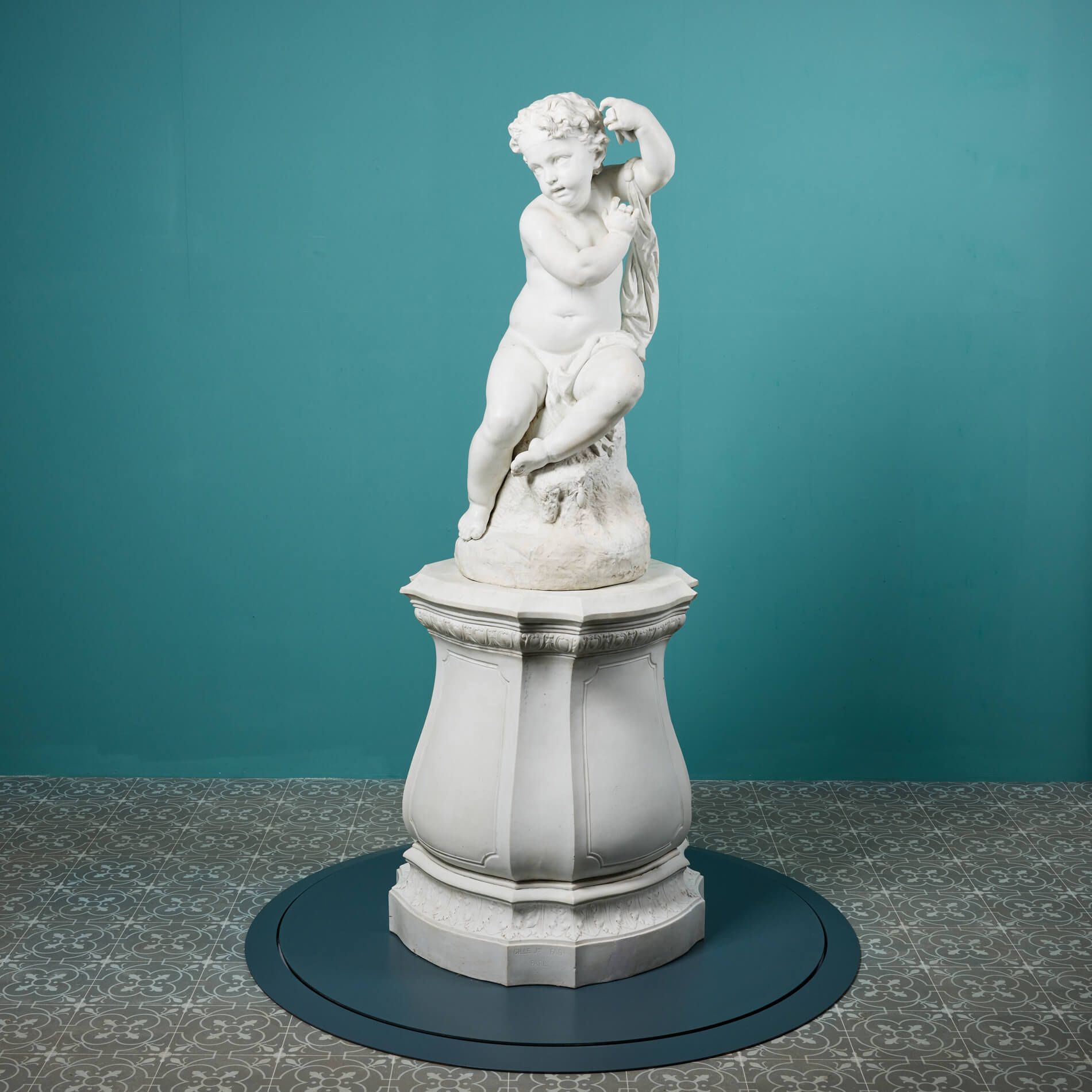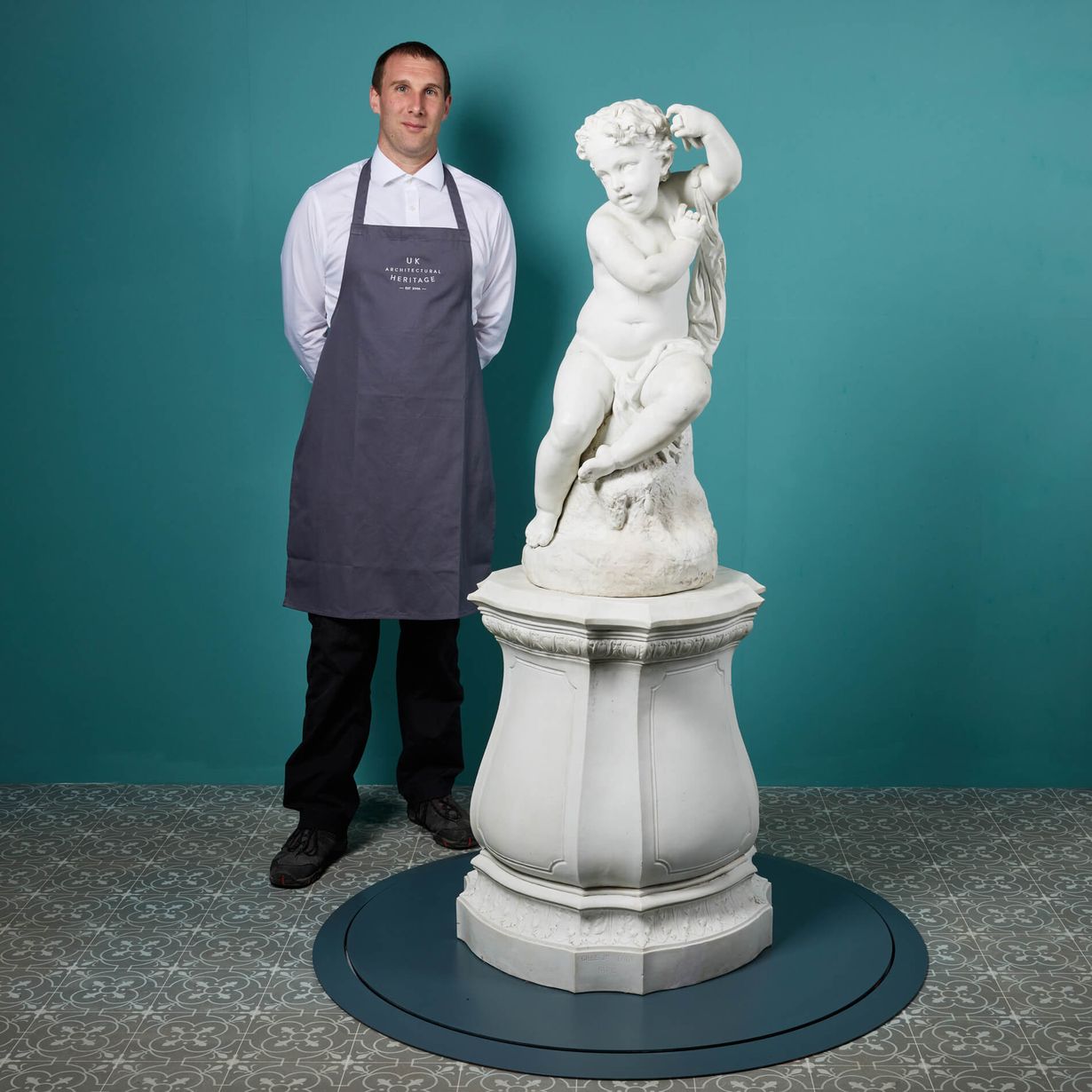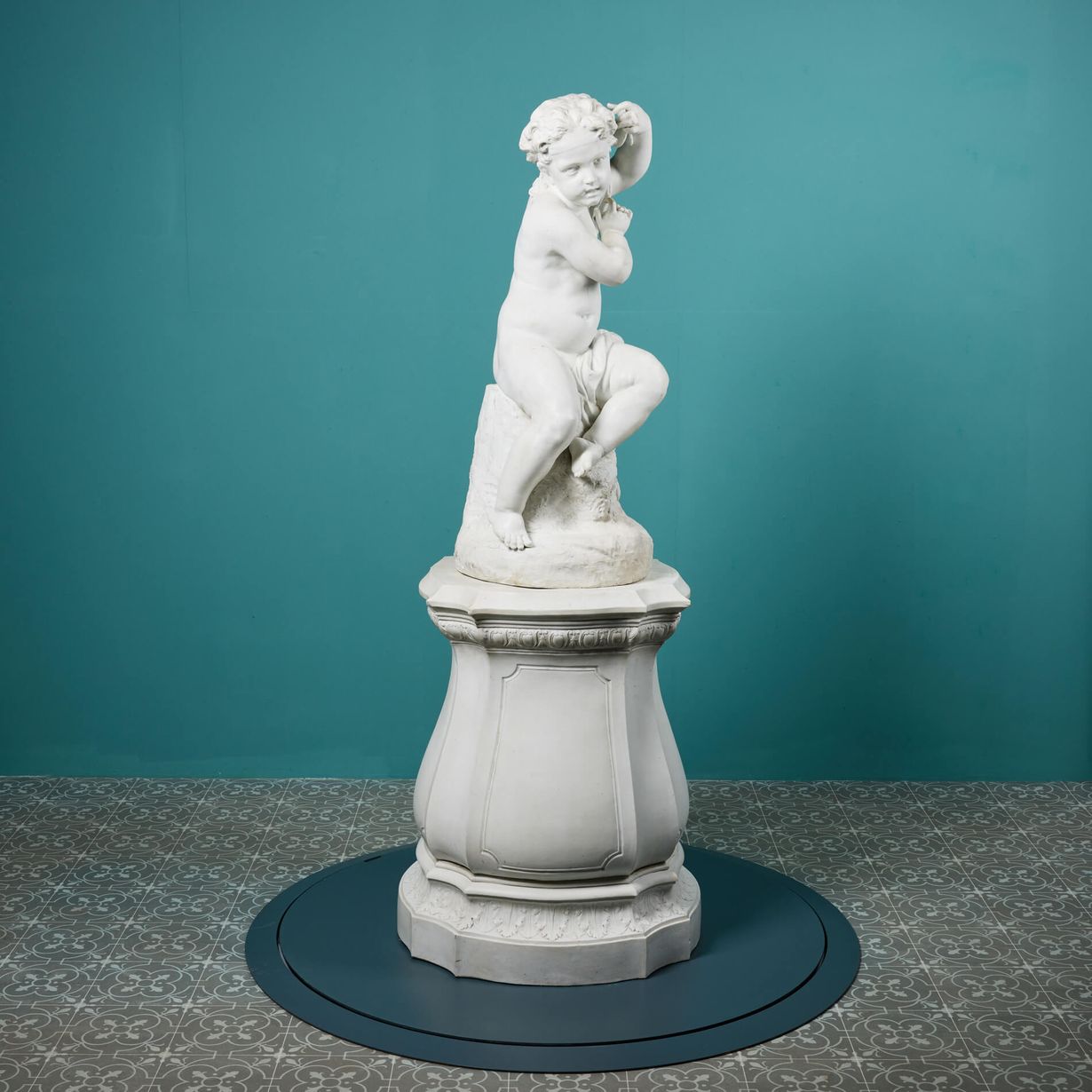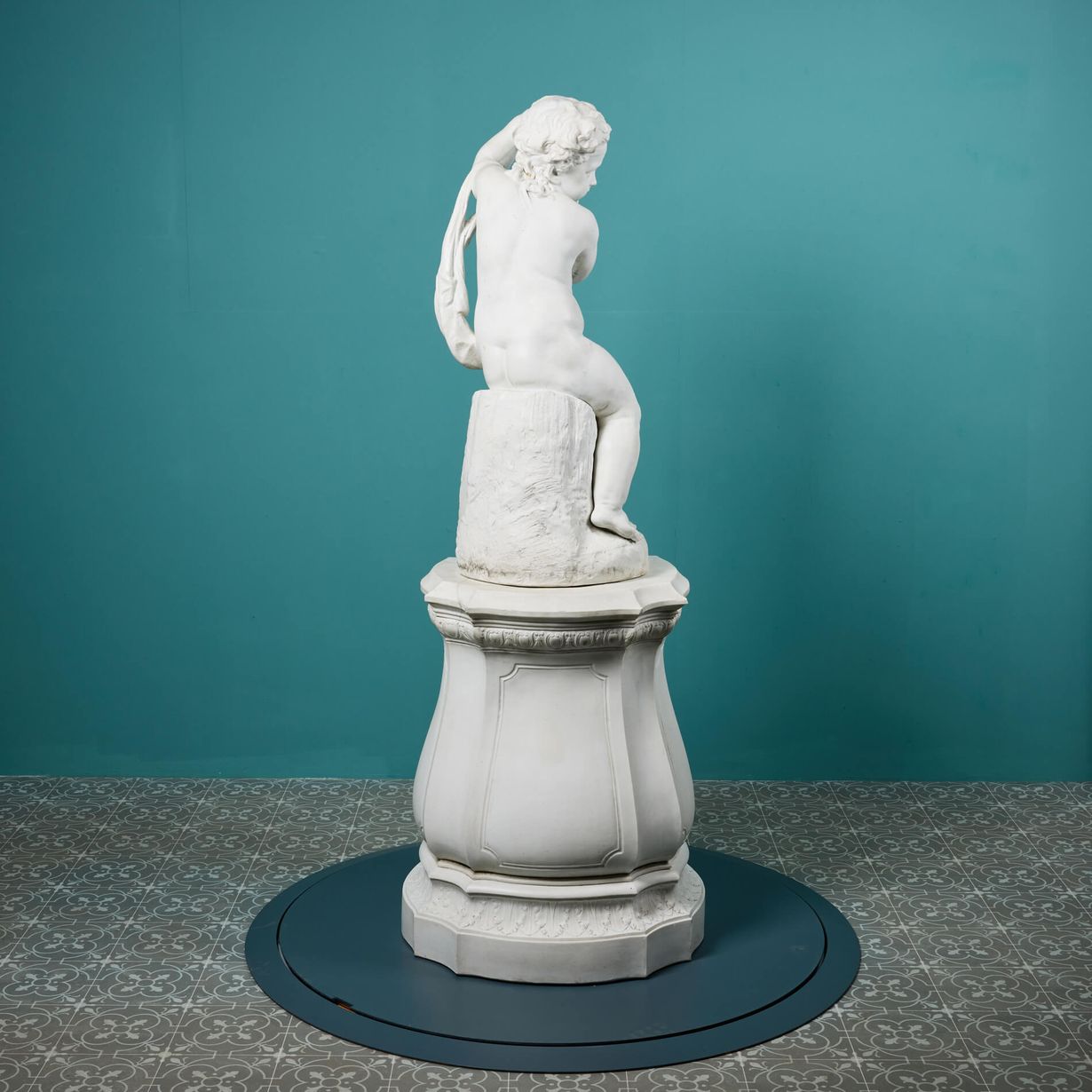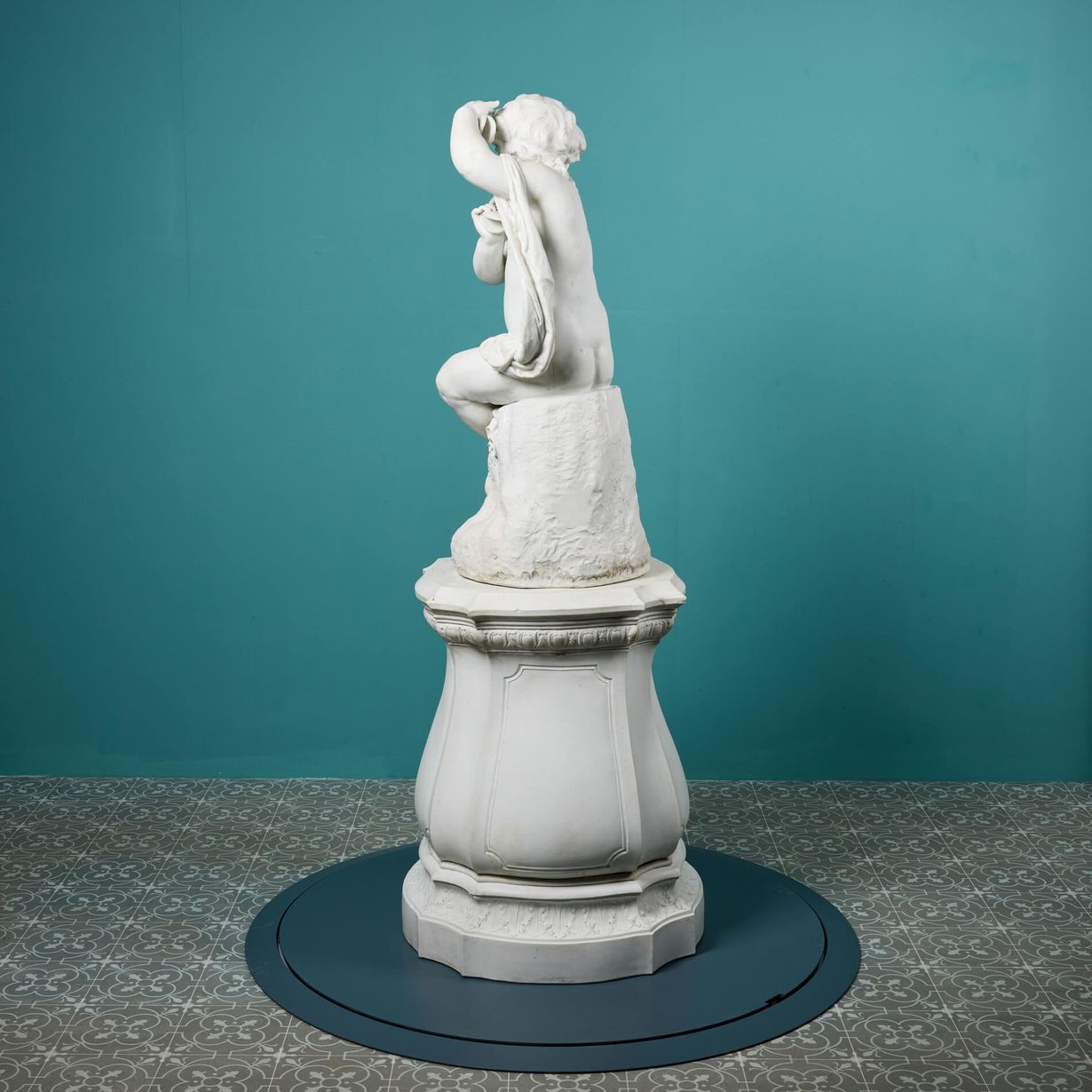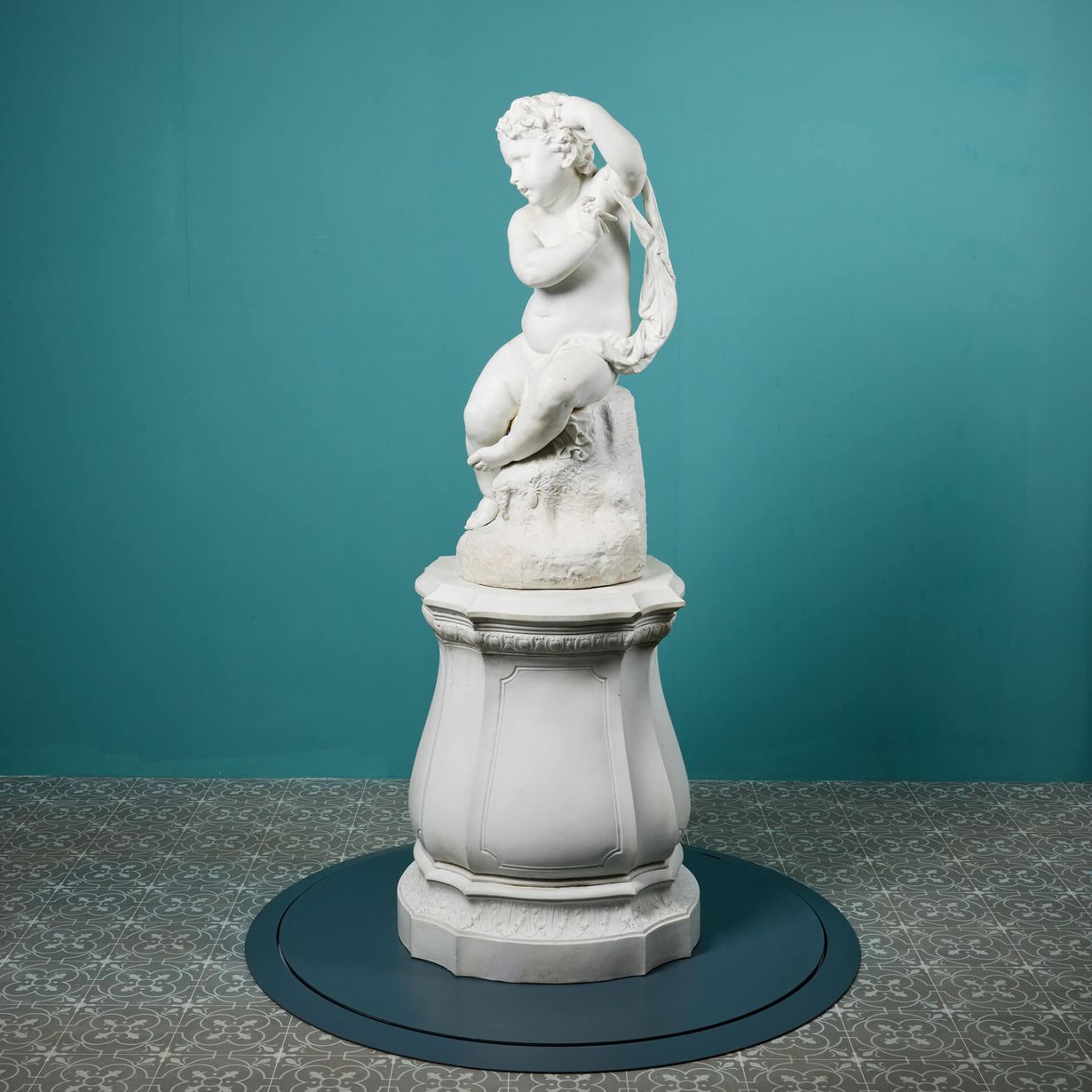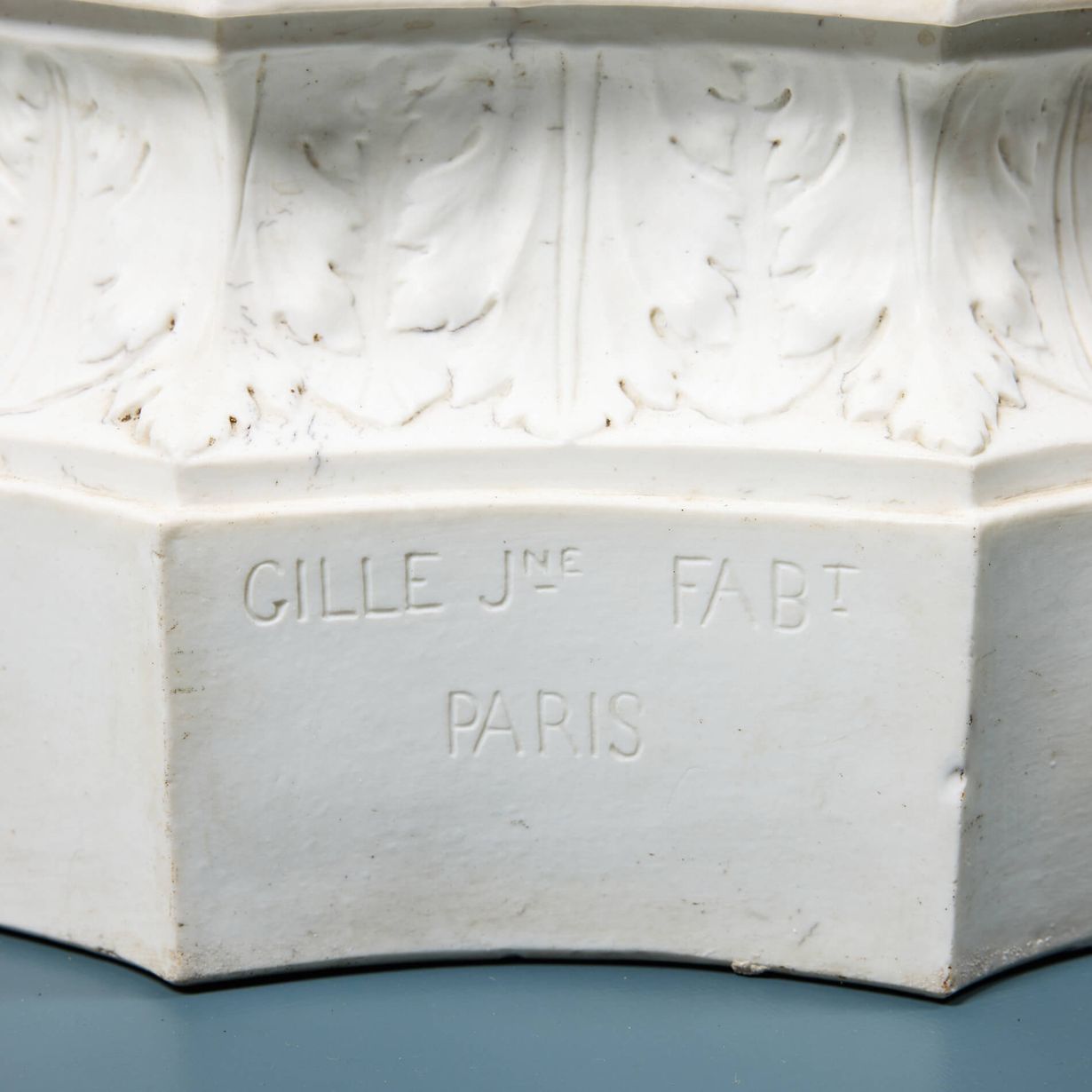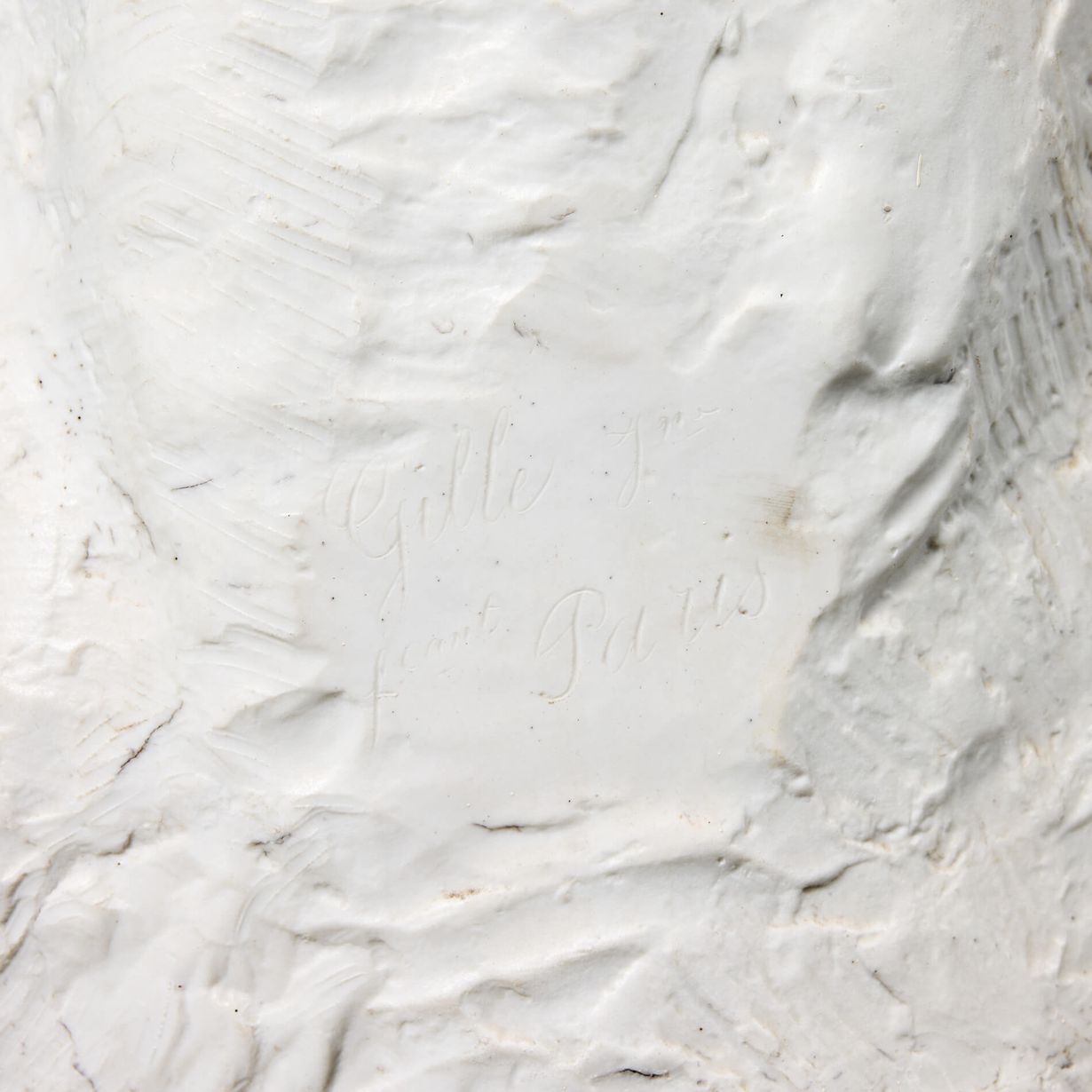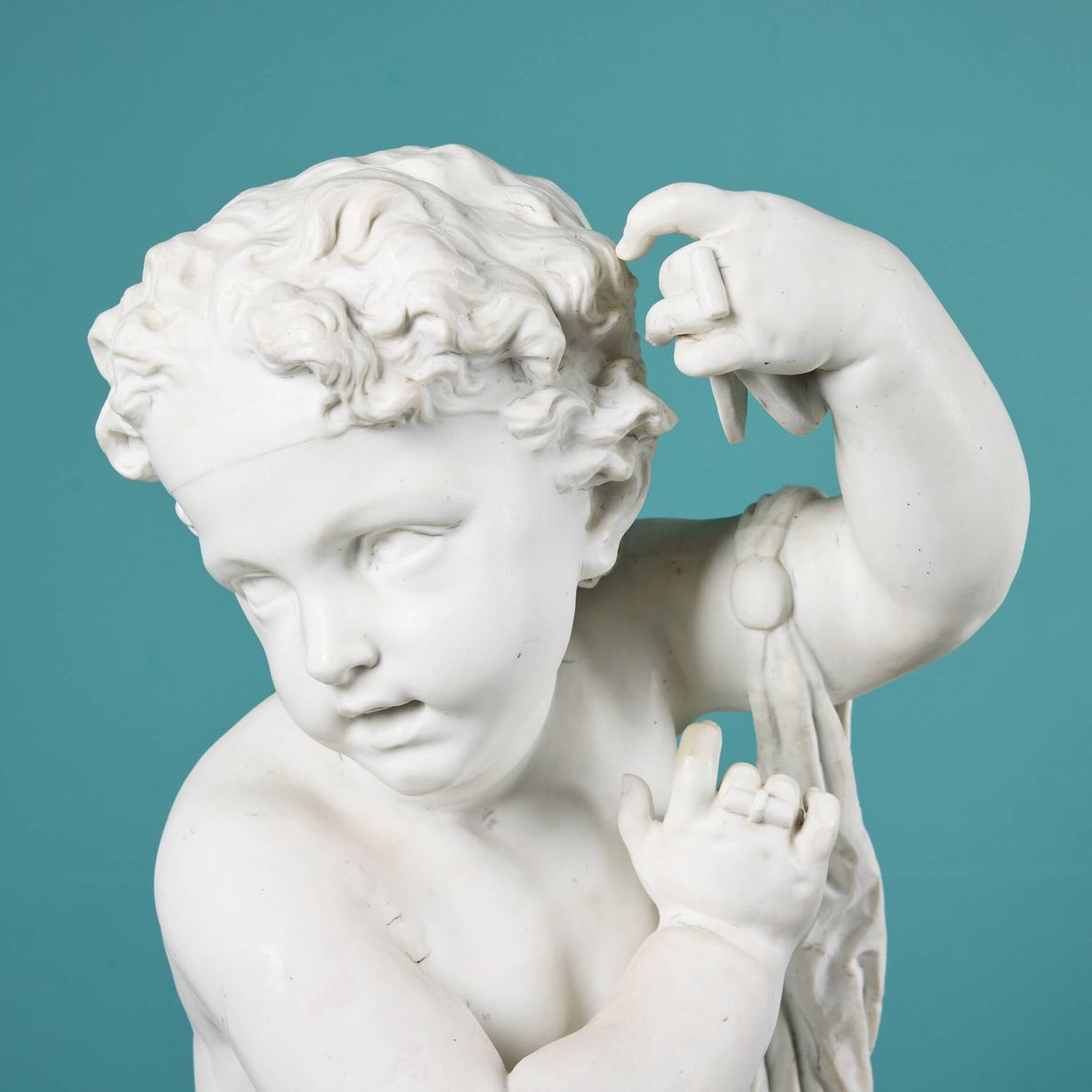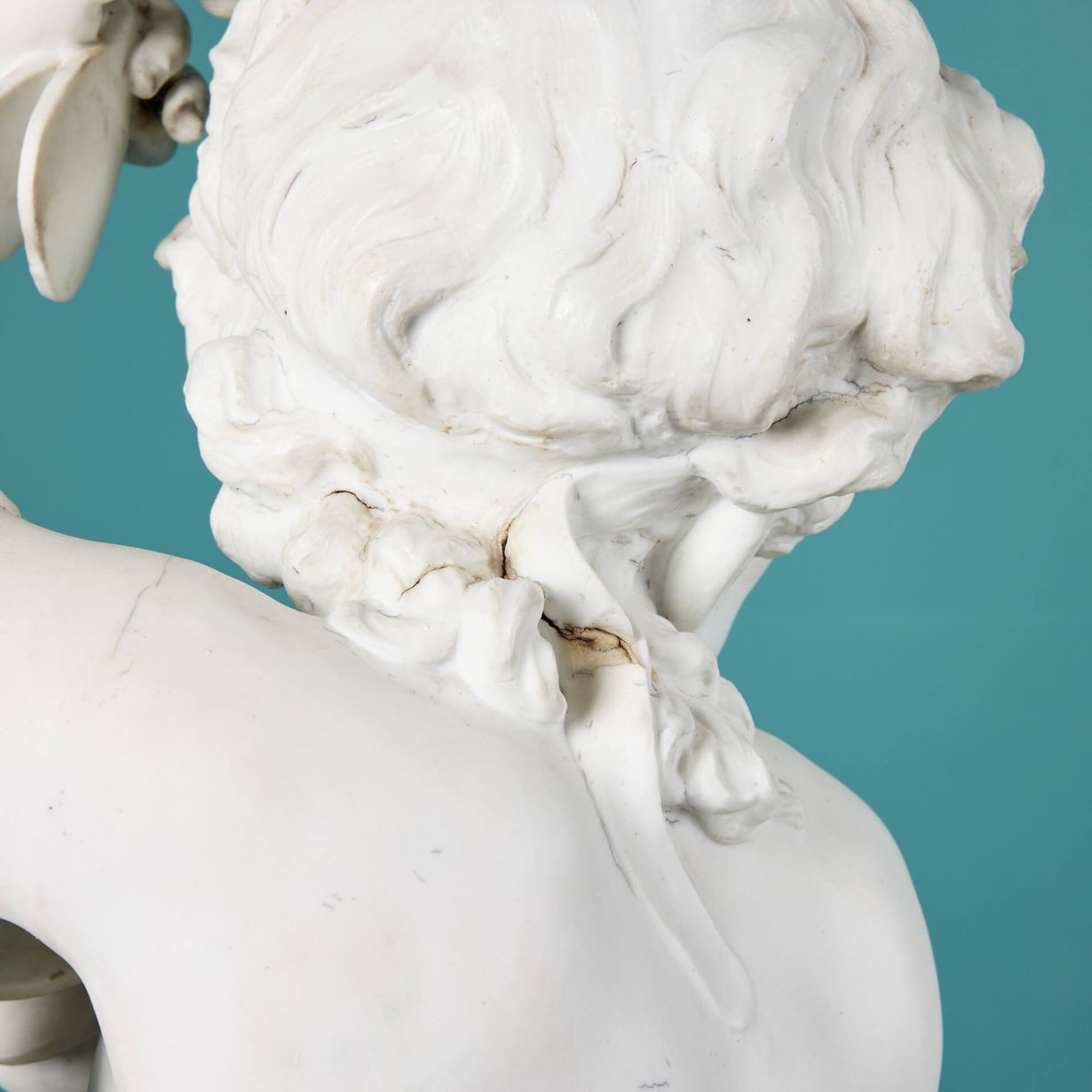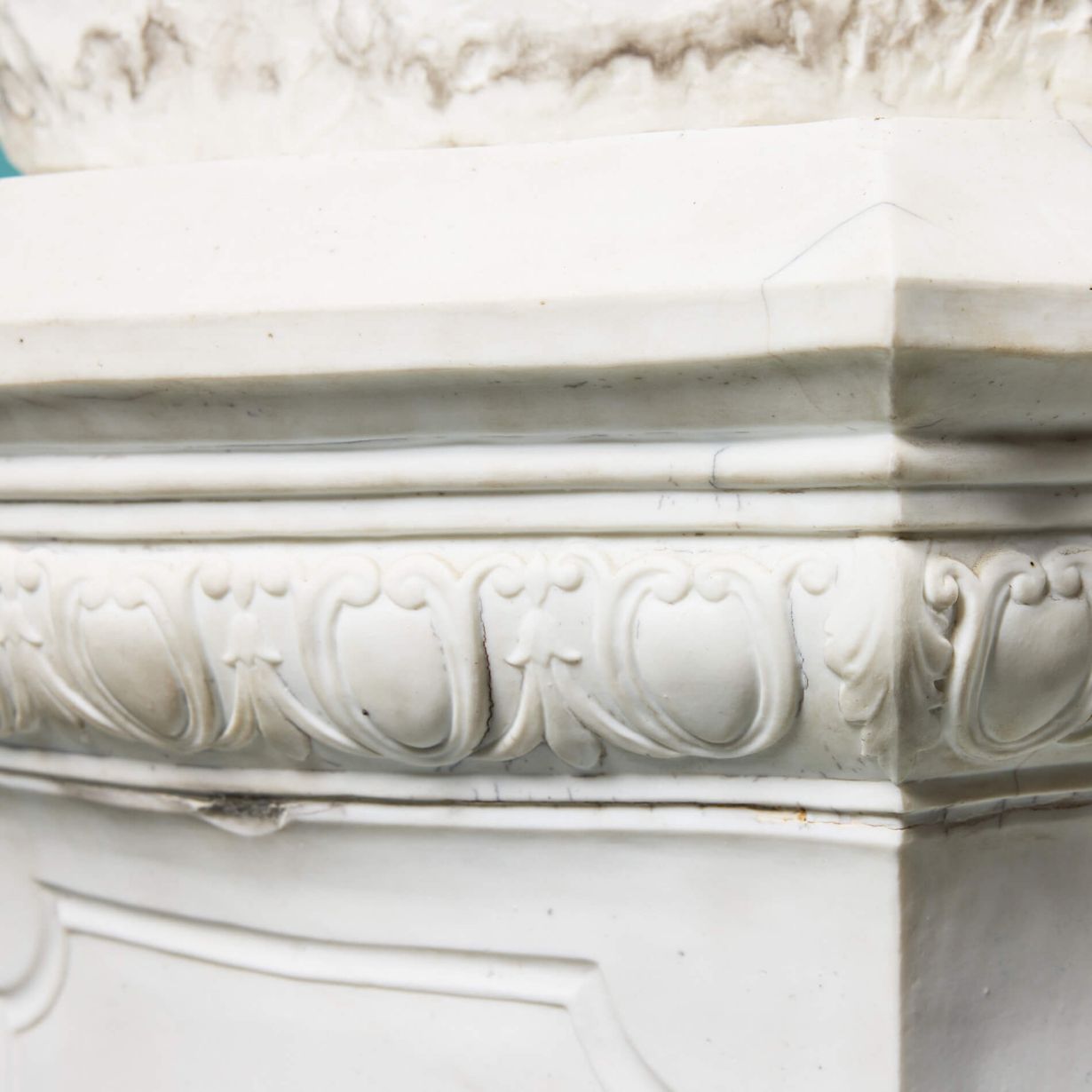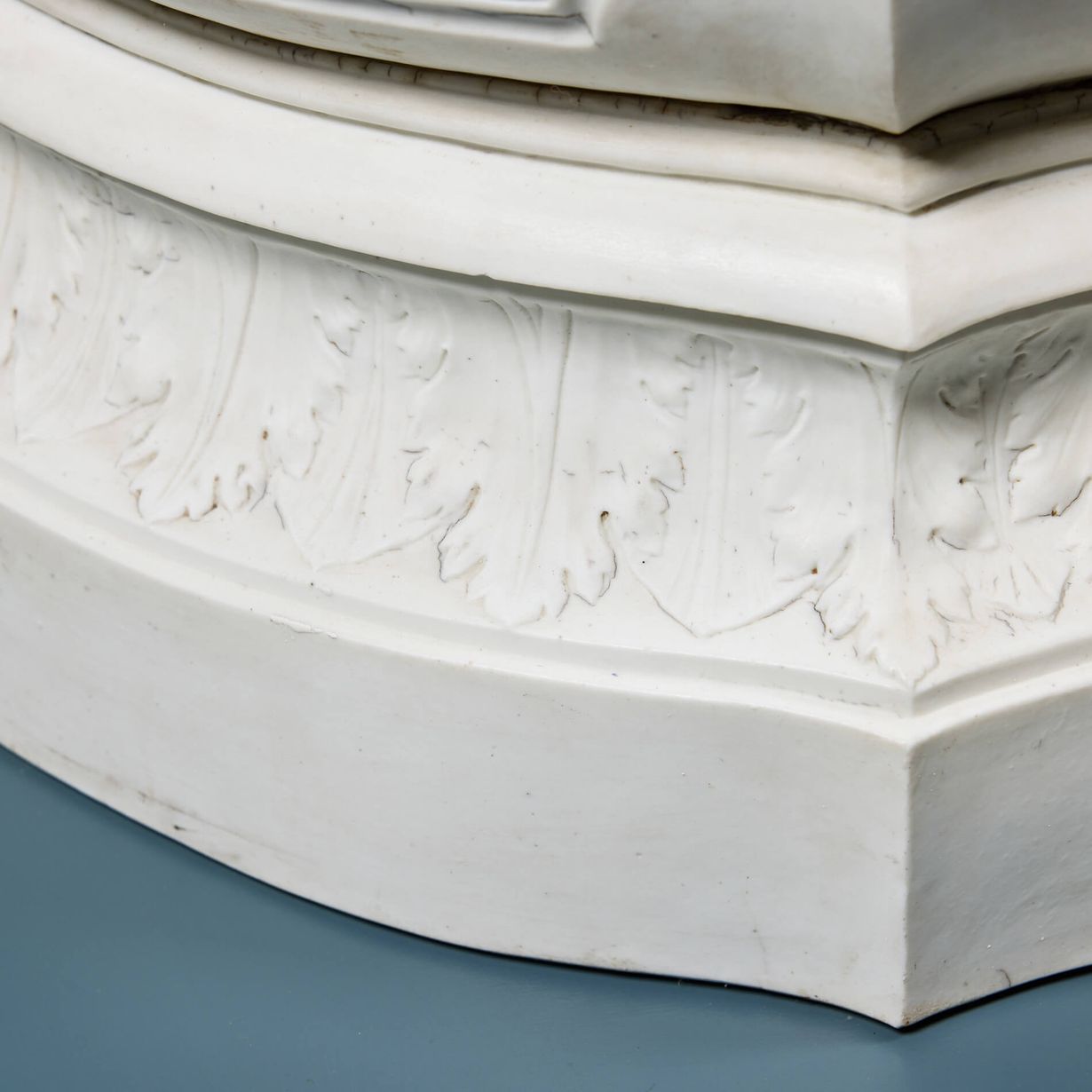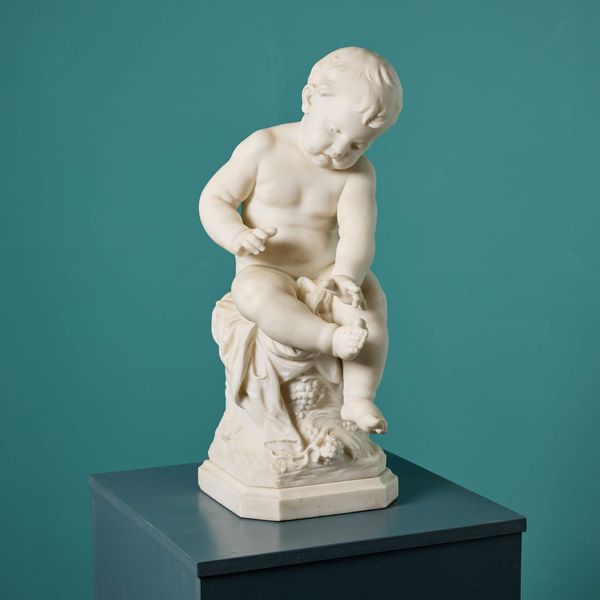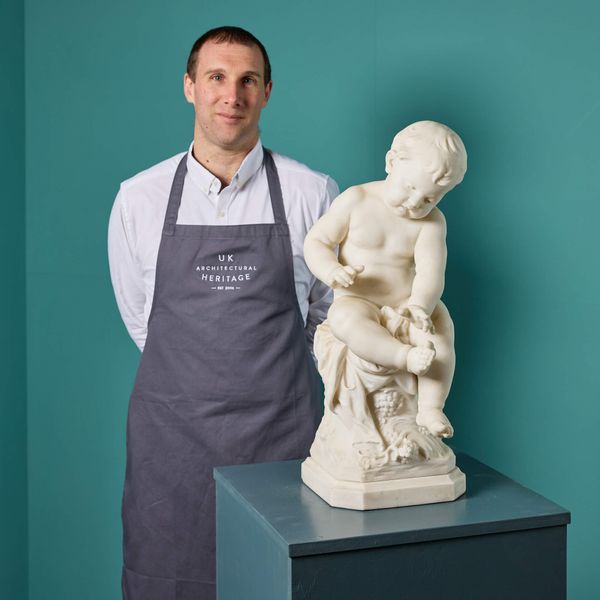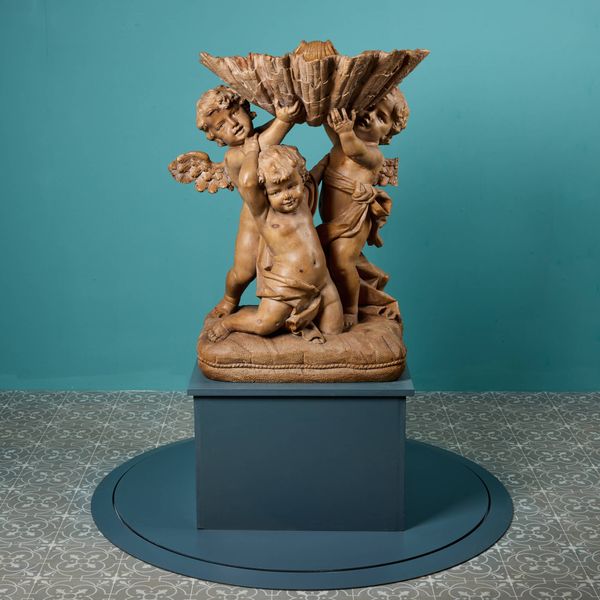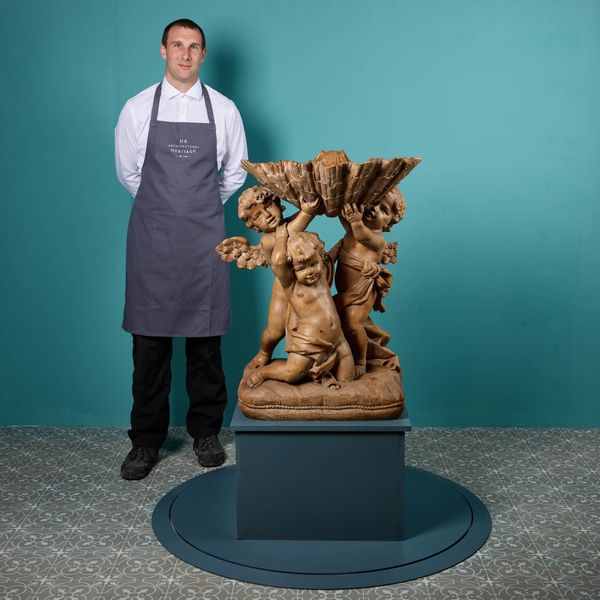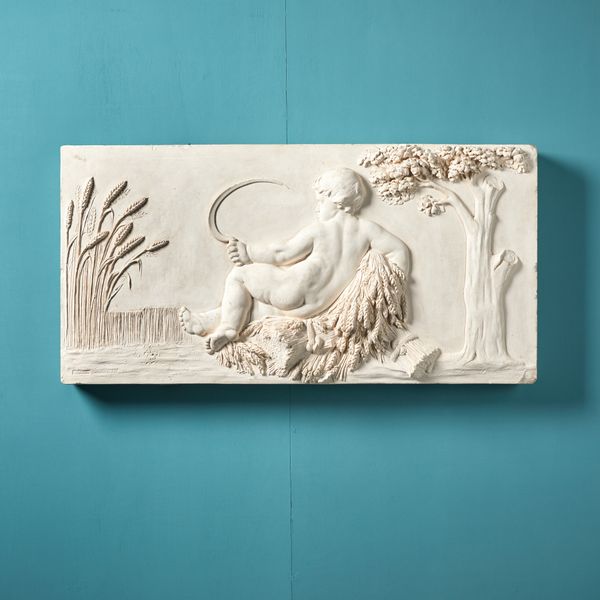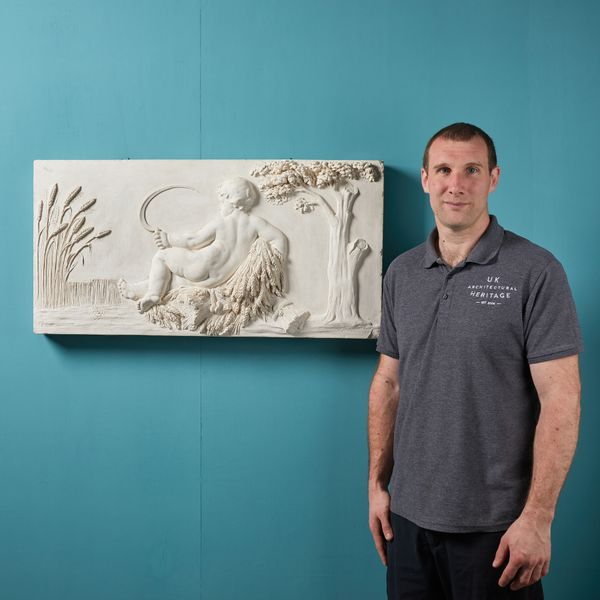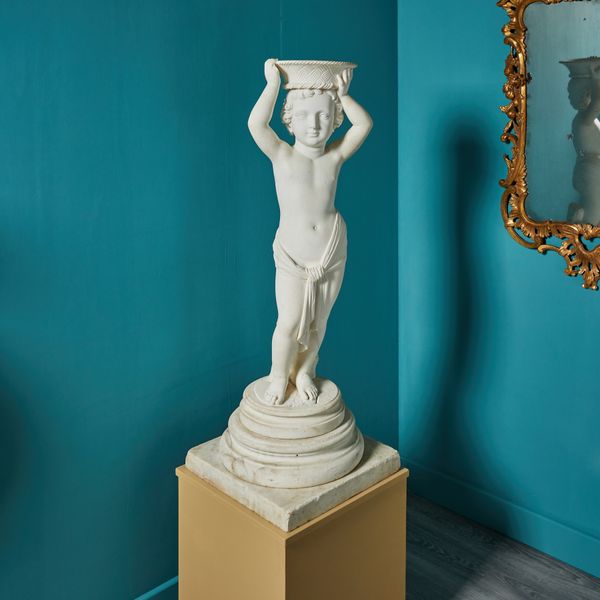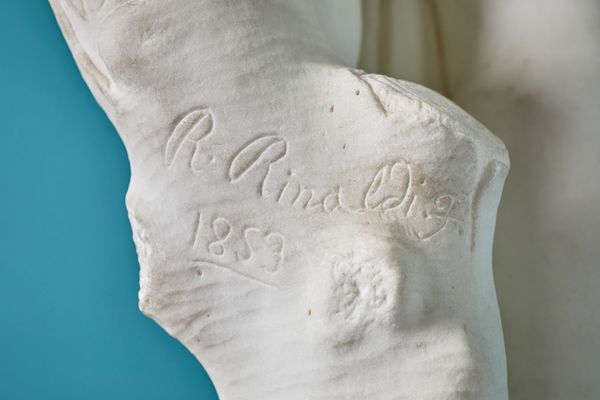About this piece
back to topA large-scale white bisque porcelain putto or cherub statue standing on an ornate bombe plinth by 19th century French ceramicist Gille Jeune. Dating from the 1860s, this statue is over 150 years old. It depicts an infant – known as a cherub or putto – wearing a head band with a swathe of fabric draped over his arm and thigh. He sits upon a tree stump or rock with his arms raised and castanets in his hands. Thanks to its scale and provenance, it is a breath-taking statue for an interior or gallery, both the putto and the plinth inscribed with the maker’s mark ‘Gille Jne, Fabt. Paris’.
Gille Jeune, Paris
Parisian ceramist Jean-Baptiste Gille (1798-1868) was one of the leading manufacturers of French bisque porcelain – also known as biscuit porcelain – of the 19th century. In 1836, he established his own porcelain factory in Paris under the name ‘Gille Jeune’. His work was displayed in many prestigious exhibitions including London’s 1851 Great Exhibition where he was awarded a prize medal, the 1862 exhibition in London and the Paris exhibition in 1867.
Four of his cherub works in the same style and scale reside at Hughenden House in Buckinghamshire as part of the National Trust’s collection. These include two of Gille’s depictions of the four seasons and a putto playing a flute as well as a putto with castanets like this one dating from 1855-1864. For this reason, we can say with some certainty that this antique cherub statue dates from the same period. It is a rare find; the only known example not in a museum collection.
